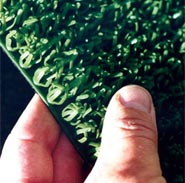
Ok, i fully admit that this is a totally cheating post: I originally posted this over at The Healthcare IT Guya few weeks ago. However with CardinalHealth’s recent problems with the FDA over one of thier infusion pumps, I think it’s important to reiterate my post. Why? Because the FDA acted on CardinalHealth not because of some technical failing of the device, but because a failing of interaction design. It seems that the design of the physical input mechanism increases the potential for a particular kind of data input error. So this is a case where a trivial investment in interaction design and testing upstream could have helped avoid costly consequences downstream.
Why does healthcare product design lag?
The simple answer is because the design discipline usually isn’t invited to the table. In most cases only engineering and marketing contribute to a product’s design—whether that product is hardware, software, or services. The problem is that engineering concerns itself primarily with feasibility and marketing with viability. This excludes the role human experience plays in the success or failure of products, resulting in so many poorly designed healthcare applications and devices.
Contrary to popular misconceptions design is not about style or aesthetics. Design is about people, real people. Design is about understanding and solving real problems real people experience. It seeks to deliver solutions that are the most useful, usable and desirable. Integrating design with engineering and marketing yields a more balanced, holistic and effective model for creating great products.

However this is a relatively new model, and as many of us know, healthcare can be very slow to adopt new models.
Why do you need a new model when the old ones have been working so well?
Poor design is not a competitive disadvantage in an environment where it is the norm. It is however a huge disadvantage when both markets start rejecting poor design and new players start delivering good design. Where competitors quickly match functionality, and solid quality initiatives have improved reliability across the board, good human-centered design is the next battleground for competitive advantage.
For instance, both Philips and GE have deep competencies in design for consumer markets where human experience is often the prime differentiator. They are now beginning to leverage these competencies for their healthcare efforts to boldly drive preference for their products and brand among patients, clinicians and administrators.
The consequences of poor design include delivering products that may exceed quality expectations, but that miss what people truly need, that are hard to learn, that are hard to use, that propose less compelling market choices for both clinicians and administrators, that increase patient safety risks and that ultimately damage your company’s brand.
So what can you do to help deliver better design?
Simply make design part of how you do things. Focus on people rather than technology. Judge your design ideas on how useful, usable and desirable they are. Open up your culture to appropriate change by introducing your people to design thinking and methods through training. Use personas and scenarios to help keep you focused on people. Foster in-house design talent. Cultivate a trust relationship with a quality design firm who can not only deliver but also educate. And most importantly for many in healthcare, give design some teeth by making design targets part of your quality system. Think big, but start small.
Some companies staff clinicians to help design products. This is a fantastic idea. But it is no substitute for an explicit competency in design. Users are not designers and more often than not don’t understand their own needs. Just like patients, users are only partially aware of symptoms and not root causes. They cannot therefore provide a diagnosis or a treatment on their own. Henry Ford famously said “If I had asked people what they wanted, they would have said faster horses.â€









